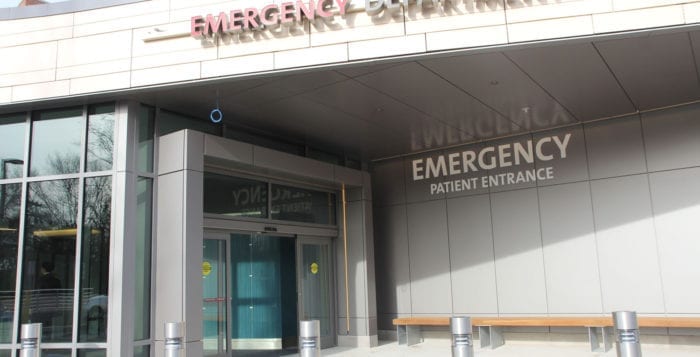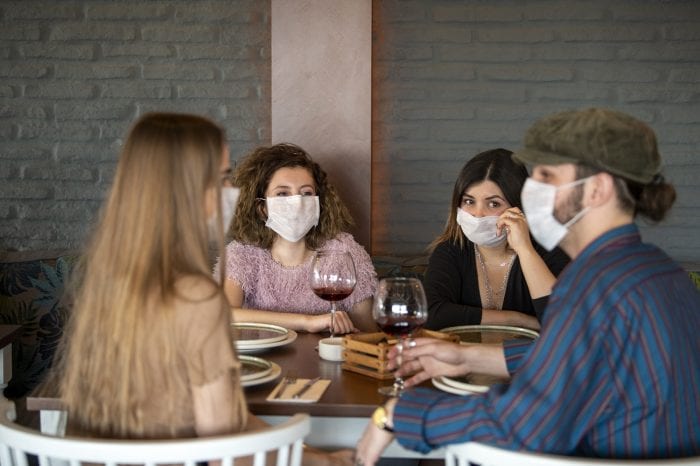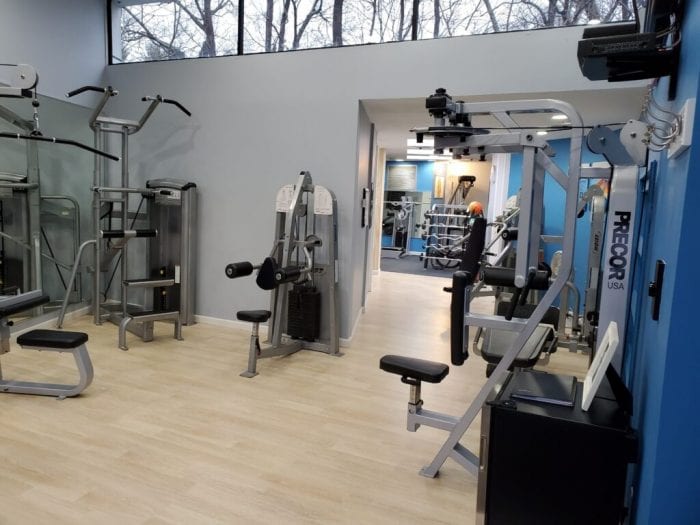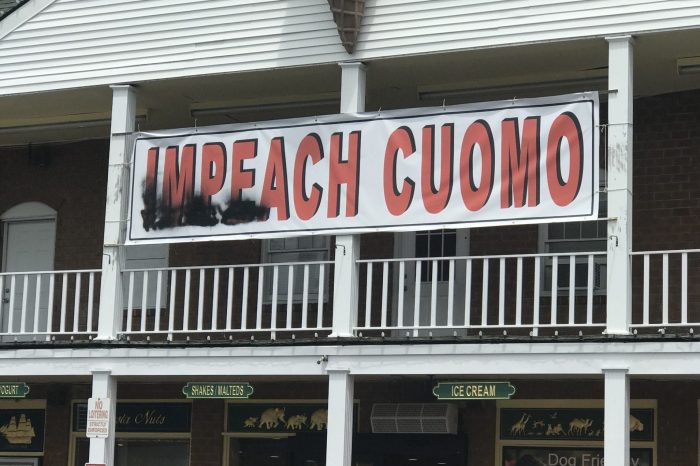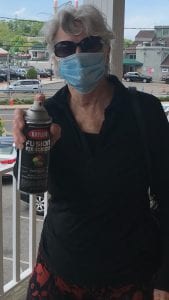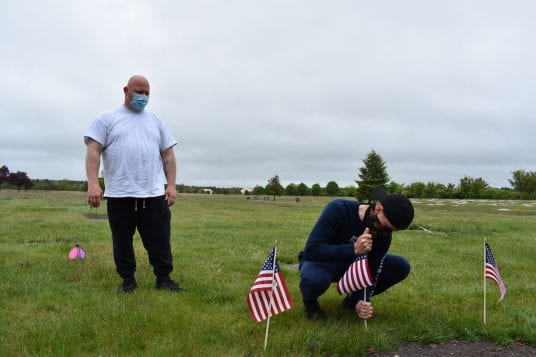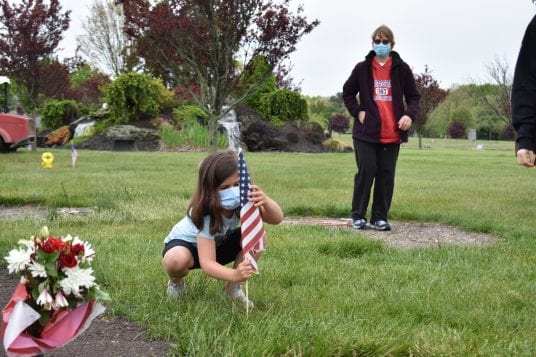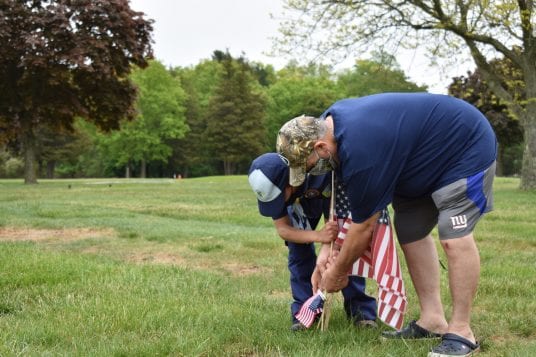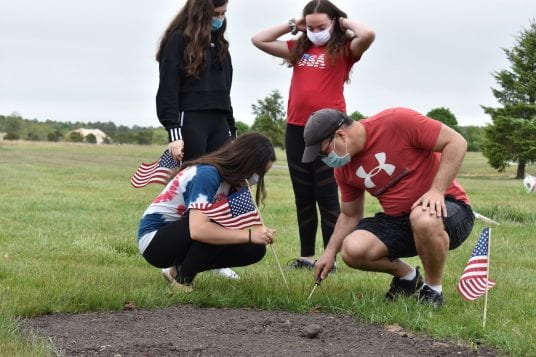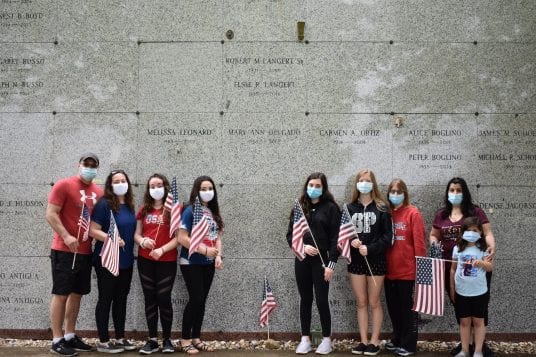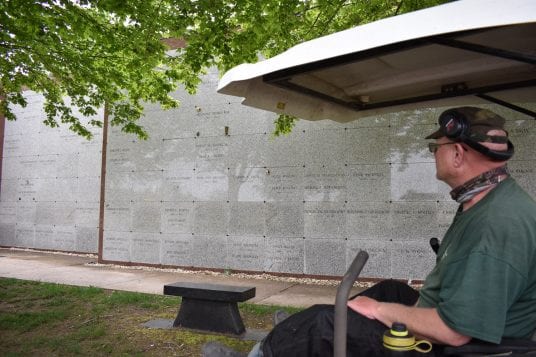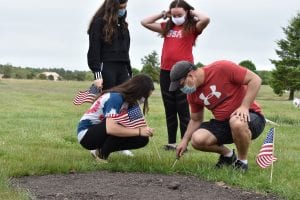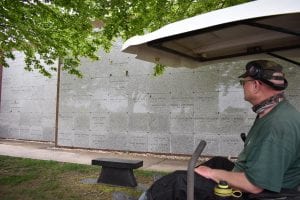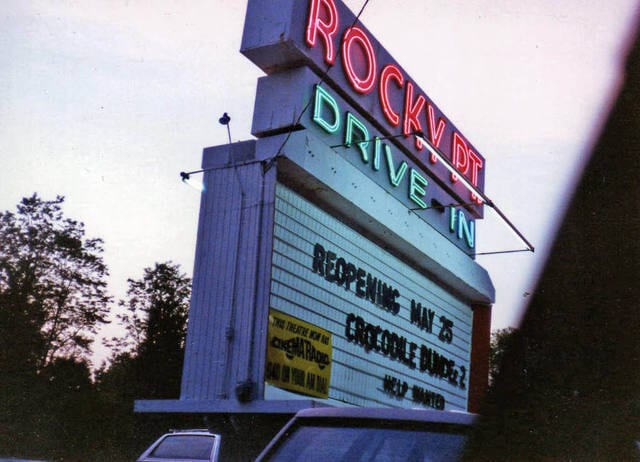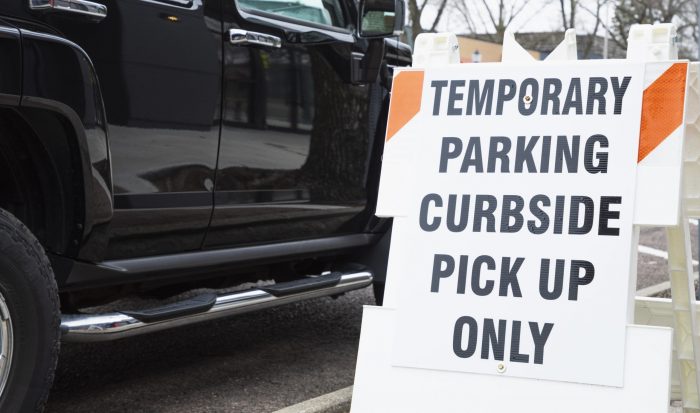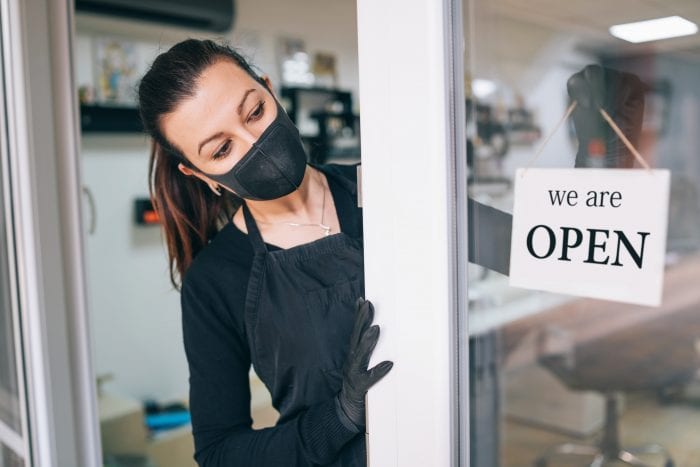Though those of many different faiths and houses of worship readily await the time when congregations can meet again after the pandemic finally slows down, one Port Jefferson church has found a way to give its hundreds of parishioners the sort of connectivity they’ve lacked since the start of the crisis.
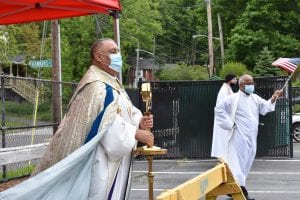
Volunteers and staff from the Infant Jesus R.C. Church in Port Jefferson directed traffic along Main Street in front of the driveway to the parish. It’s a Sunday morning, May 24, and hundreds of vehicles pull up the ramp into the church’s parking lot. Some Sundays, the line stretches all the way up the road to the PJ Lobster House at the corner of Main Street and North Country Road. It’s a mix of old and young, big SUVs and compacts, but nearly all smile as they say “hello” to their pastors and receive a drive-through version of the Blessed Sacrament from the Rev. Rolando Ticllasuca.
The scene has largely remained the same every Sunday for the six weeks since Easter. It offers that small bit of community connection for the parishioners living in the area, so many of whom have been cooped up at home, working through the anxieties of the ongoing pandemic.
The Rev. Patrick Riegger, pastor at Infant Jesus, knows nearly every person in each vehicle on sight, even through their face coverings and masks. He said church members, of whom the total families number close to 5,000, find that the event helps them reconnect with their community.
“It shows support for them during these unprecedented times,” Riegger said. “For the last six weeks, this is where the community has been, here at Infant Jesus.”
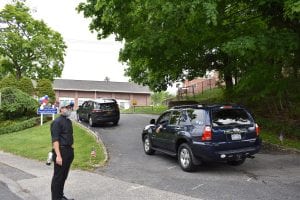
He said the weekly event started when church members Peter and Karen Helfrich suggested they host some kind of event for Easter to allow members to participate in some way on the holiday. Performing the event the following Sunday, parish staff were surprised by just how many continued to come out. Week after week, 300, 400 or even 500 vehicles show up from all over the local area in the three-hour period the service is hosted. It may not be the same people every single week, but many have returned once or twice over the span of the service. With the fact that cars often contain families, members estimated they likely receive over 1,000 people a week.
Michael Dyroff, a commissioner with the Terryville Fire Department and lifelong church member, came to the drive-through service with his wife Debbie and said they are “blessed” to have the religious staff willing to perform the service.
“It’s a way of connecting with folks,” Dyroff said. “It’s a wonderful idea.”
The church relies on staff and volunteers, including from the local Knights of Columbus, to help direct traffic up from Main Street and around through the parking lot. Members in their cars keep a distance from the clergy and receive the Blessed Sacrament from afar.
Corrine Addiss, the head of religious education for the church, stood outside helping to direct traffic. She said the number of cars coming through really starts to pick up after 9:30 a.m. She thanked the volunteers who “could be in bed, sleeping,” but are instead helping their parish.
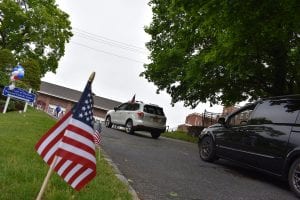
Of course, it will not make up for a real service hosted inside a church, but it may be several more weeks or even months before that can begin. Perhaps most important for Riegger is the act of communion, which hasn’t been hosted since the church was closed to anything but private prayer back in March.
Even when churches open, it may be very different than what churchgoers are used to. The Archdiocese of New York released a five-phase reopening plan May 21 that included first opening for private prayer and confessions, before moving on to attendee-limited baptisms and marriages, distributing Holy Communion outside of Mass, then hosting limited daily or funeral services before finally allowing Sunday services at a maximum of 25 percent the usual occupancy.
Riegger said they would be following New York State’s and the Archdiocese of New York’s guidelines.
Still, Infant Jesus plans to keep the drive-through church service alive as long as the pandemic and shutdown order mandates people keep apart. That might include pews marked with tape to keep people from sitting too close, or communion being done wearing gloves and a mask.
“When you have a crisis like this, where everything’s closed down, how do you give them that sense of community, that sense of assurance that God is with them?” said Dominik Wegiel, a seminarian at Infant Jesus. “This is our sort of our way of connecting them to the parish, connecting them to the community, but more importantly connecting them in that God is with us even in these times.”


